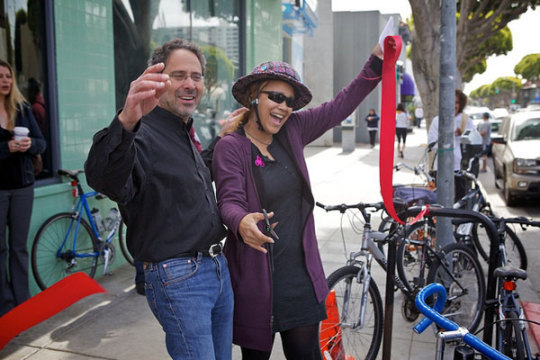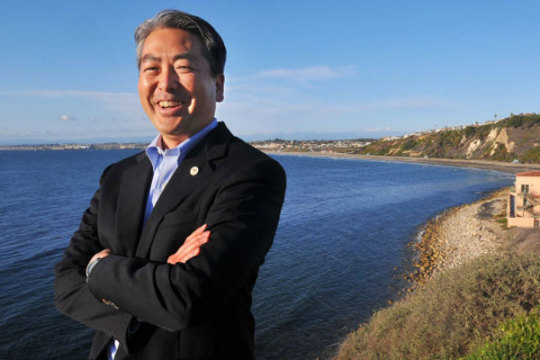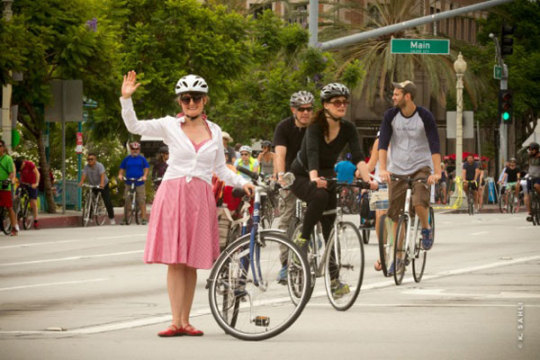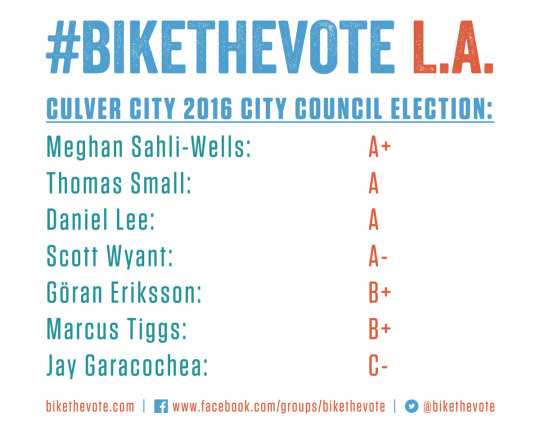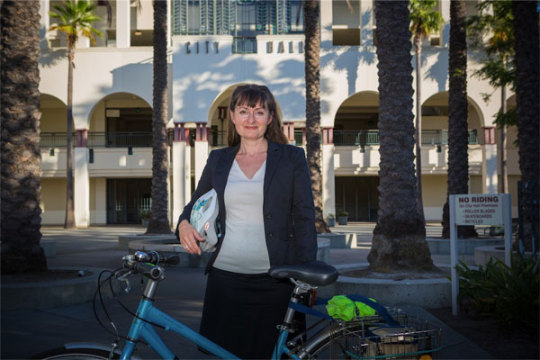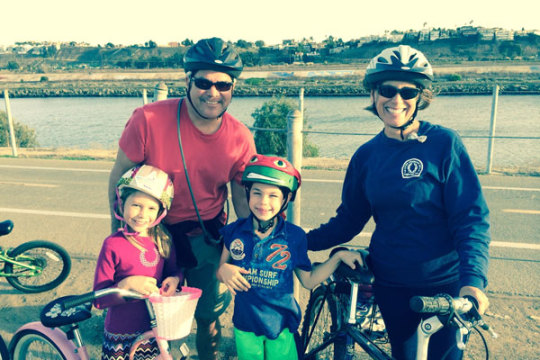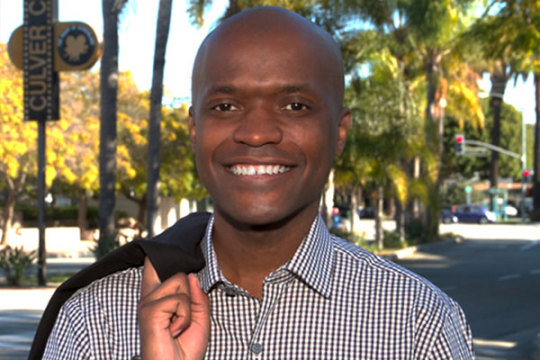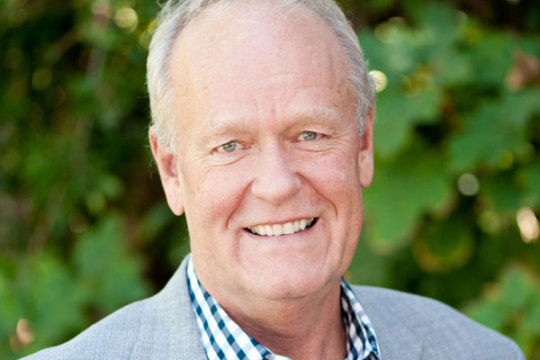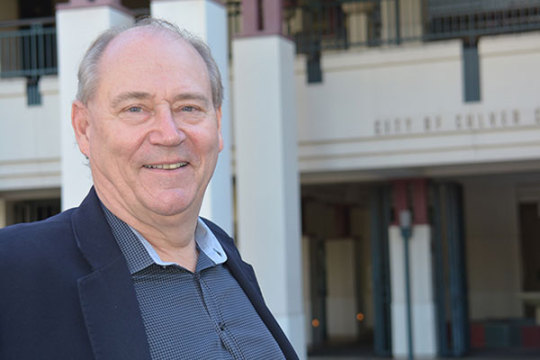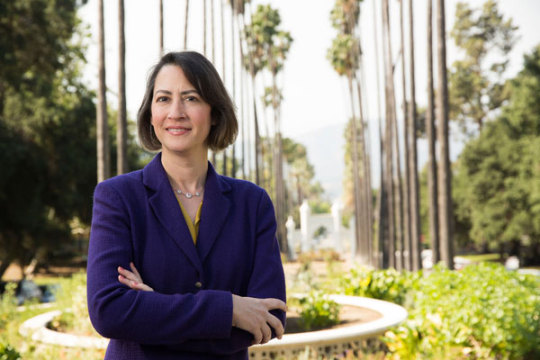
Candidate campaign page: http://votelaurafriedman.com/
Laura Friedman is a spectacular advocate for environmental issues in Southern California and a champion for making Los Angeles County safer for biking. As a Glendale City Council Member, Friedman installed a bike rack in her city-provided parking space, and was a highly visible fixture in the Los Angeles region as a bike-commuting elected official. The Los Angeles cycling community is likely familiar with Friedman from her work in coordination with Walk/Bike Glendale and her participation in various Los Angeles County Bicycle Coalition events. Silver Lake, Los Feliz, and Atwater Village residents likely remember her bold support for a safe Hyperion Bridge. In her response to CalBike’s questionnaire, Friedman expressed support to increase funding for active transportation, to prioritize first mile/last mile bicycle infrastructure, and to build equity into bike share systems across California. While outgoing Assembly Member Mike Gatto has been an effective advocate working to curb hit & run crimes, we can think of no greater leader than Friedman to represent Silver Lake, Los Feliz, Atwater Village, East Hollywood, Burbank, and Glendale in making the Los Angeles region more bike-friendly. Knowing that she will make an exceptional leader on active transportation issues, we are delighted to endorse Laura Friedman for California State Assembly.
(See below for Laura Friedman’s full CalBike questionnaire response)
1. Do you ride a bicycle in your district and/or in Sacramento?
Yes
2. If yes, for what purpose(s) and how often? How do you most commonly commute to work?
I had a bike rack installed in my parking space at the Glendale City Hall and bike to Council and other meetings whenever possible.
3. If no, what would inspire you, and the 60% of people who are interested in riding, but concerned about safety to ride a bike for transportation?
I would bicycle more if I knew of safer routes to get to my destination. Also I live up a steep hill so getting home can be a challenge for me.
4. Would you commit to joining a group ride with local advocates along a route that illustrates the bicycle infrastructure conditions of the district you are running for?
I have done quite a bit of work already with Walk/Bike Glendale and the LA Bicycle Coalition.
5. Caltrans has established a goal to triple the number of bike trips by 2020. Do you support this goal?
Yes
6. Research has shown that the most effective way to boost the number of people bicycling is to create interconnected “complete bikeway networks” of physically protected bike lanes and traffic-calmed streets. The California Bicycle Coalition is seeking to create a new state program to provide large grants of $25-$50 million to build such networks in the communities which need it most. It will incentivize holistic planning of networks rather than piecemeal planning of one street at a time. Do you support using state funds for a competitive complete bikeway network grant program?
Yes
7. Do you support our complete streets provisions in SBX 1-1 of the special session to mandate the inclusion of “new bicycle and pedestrian safety, access, and mobility improvements” in every non-freeway road project funded by the state? It calls for sidewalks and protected bike lanes or bike paths in transit-dense areas on most roads with a speed limit over 25 miles per hour.
Yes
8. The Active Transportation Program (ATP), the sole state funding source for biking, walking, and safe routes to school improvements, was created by the Brown administration in 2013 with the stated intention to increase it continually. However, the Governor’s latest budget proposes no increase for the third straight year. Current funding levels on a per capita basis place California in the middle of the pack among states who provide dedicated active transportation funding. To reflect Caltrans’ goal to triple biking and double walking trips by 2020, do you support doubling the ATP?
Yes
9. Bike sharing programs are spreading throughout California, but they often do not reach low-income neighborhoods. Do you support providing state funds to allow these programs to serve all Californians who could reasonably benefit, in the same way that public transit serves the public?
Yes
10. About 3,000 people are killed on California streets every year. Do you support a “Vision Zero” goal of zero traffic fatalities by a certain date?
Yes
11. The California Air Resources Board estimates that 38% of California’s 447 million metric tons of carbon emitted every year comes from the transportation sector, which along with other emissions, results in thousands of deaths and millions of dollars in wasted health care spending. What do you feel are the three most important actions the state should take to reduce carbon emissions from transportation?
A. The 50% petroleum reduction goal originally contained in SB350 should be enacted.
B. Local alternative and public transportation projects such as those funded by measures R in Los Angeles need to be priorities, as do solutions to “first and last mile” challenges which keep people from utilizing public transportation.
C. Land use policies in California need to encourage the creation of density near job-centers and transit. Development should be done in a way to encourage well designed cities which prioritize public transportation, pedestrian and bicycle infrastructure, and which provide public gathering spaces, schools, art and cultural amenities along with shopping and retail in compact, walkable city-centers. The State could help local governments update their general plans to allow for this kind of smart growth.
12. Should cap-and-trade funds be used for highway congestion relief projects that expand road capacity?
No
13. If you could send out one tweet to the bike community that you think would win over their support, what would it say?
While on the Glendale City Council, I gave up my car for over two years to show that it was possible even for middle-aged to get around by bicycle, foot and bus. We have the power to create a healthier, safer, sustainable California!
14. Do you have any other comments or questions about how you have supported or would support the California Bicycle Coalition’s mission of enabling more people to bicycle for healthier, safer, and more prosperous communities for all?
I have led the effort to bring bicycle infrastructure to Glendale, and was honored by the LA Bicycle Coalition for my work. I supported embedding an LA Bicycle Coalition staffer in the Glendale City Planning Department for two years to work with the City’s Mobility Planner to create a comprehensive bicycle master plan for Glendale. We are now implementing that plan.
I led teams of Glendale City staff and residents to Long Beach and Berkeley to learn about those city’s bicycle infrastructure. I have required new developments to incorporate bicycle parking and storage into their projects. Glendale is a conservative city that is not always bicycle-friendly. Despite this, I have loudly advocated for cycling and I have consistently pushed the envelope of what we can accomplish in Glendale with regards to bicycle infrastructure. You will get the same level of commitment from me in Sacramento. And I’ll ride my bike to work in the Capital as well!

